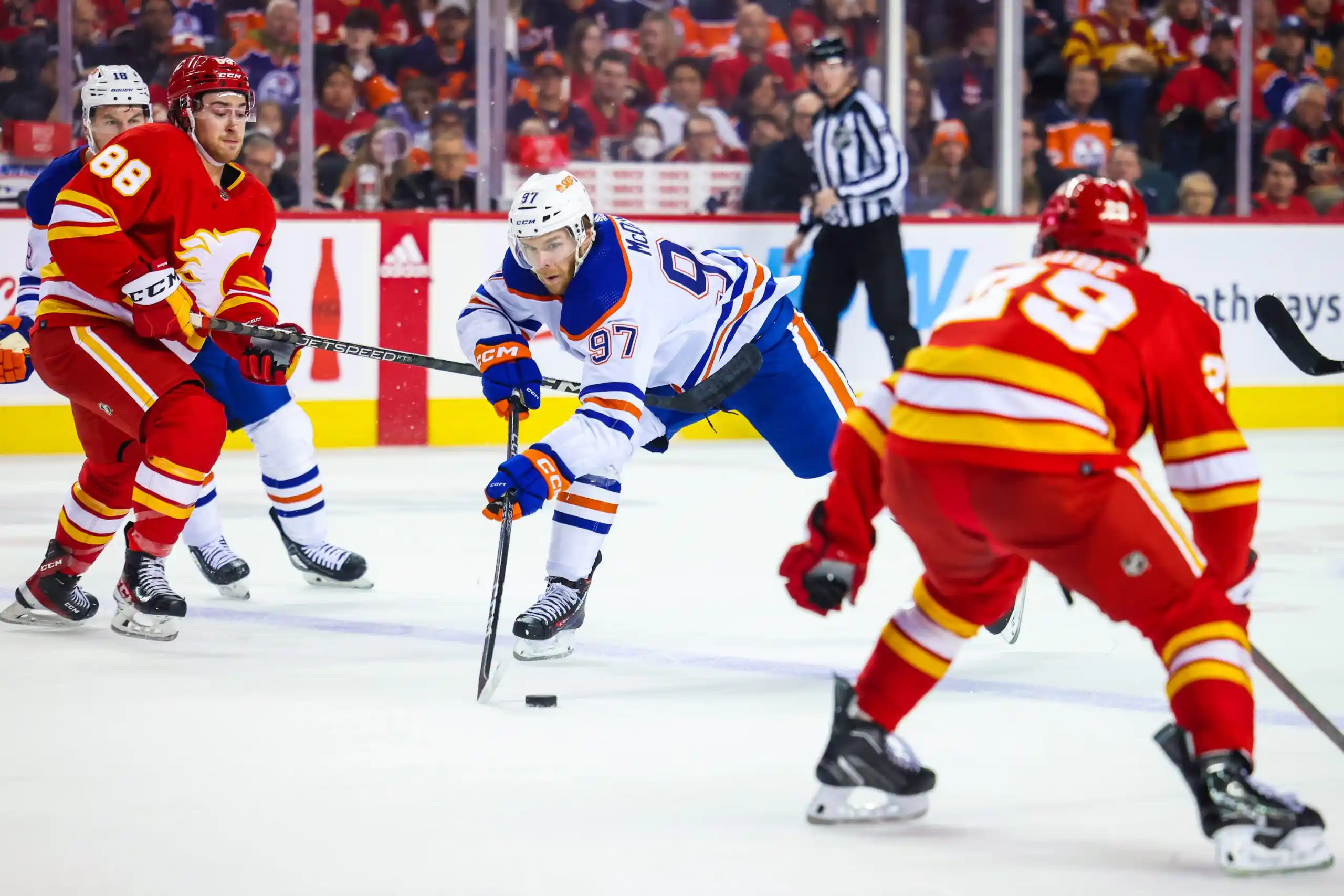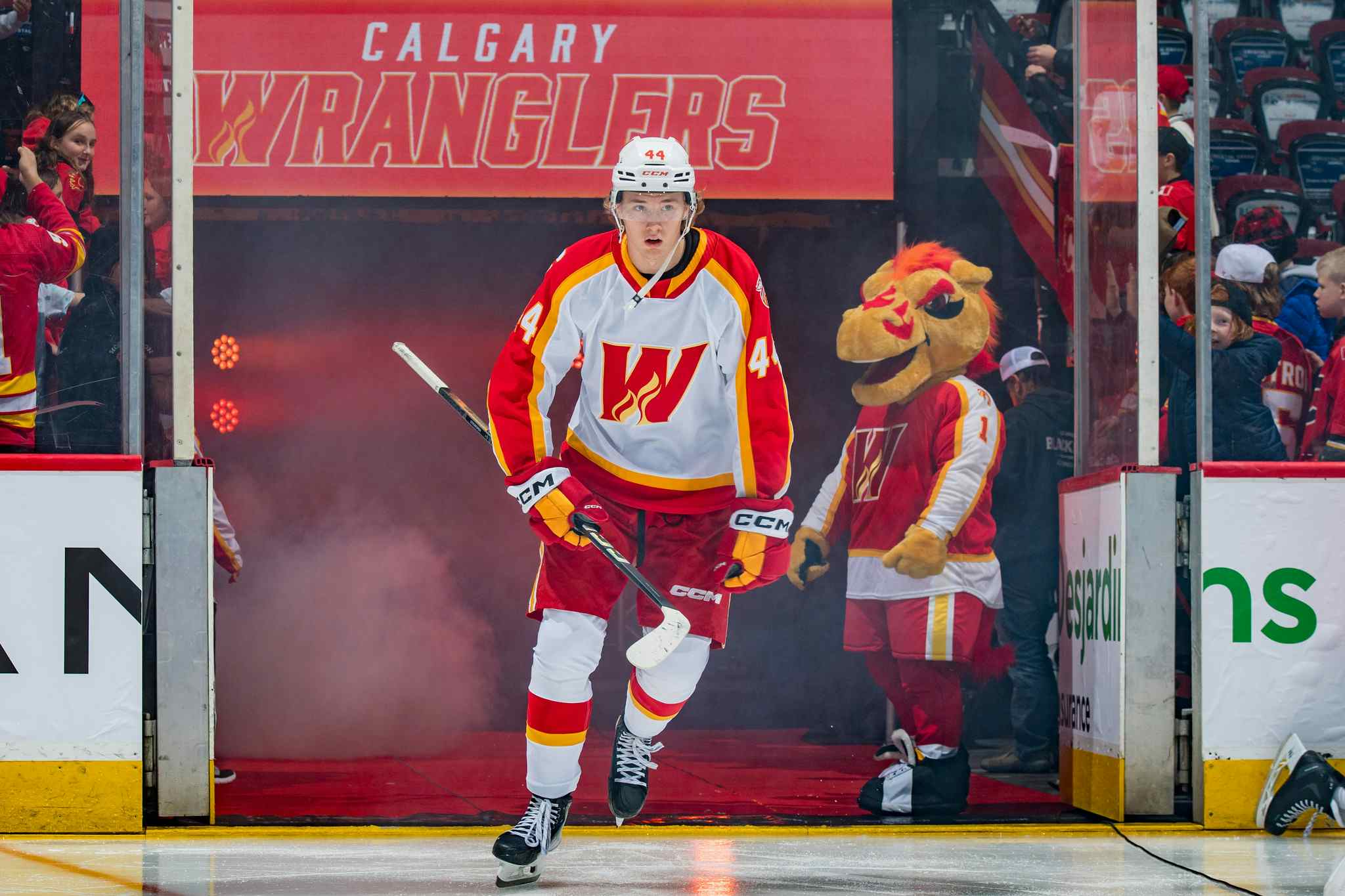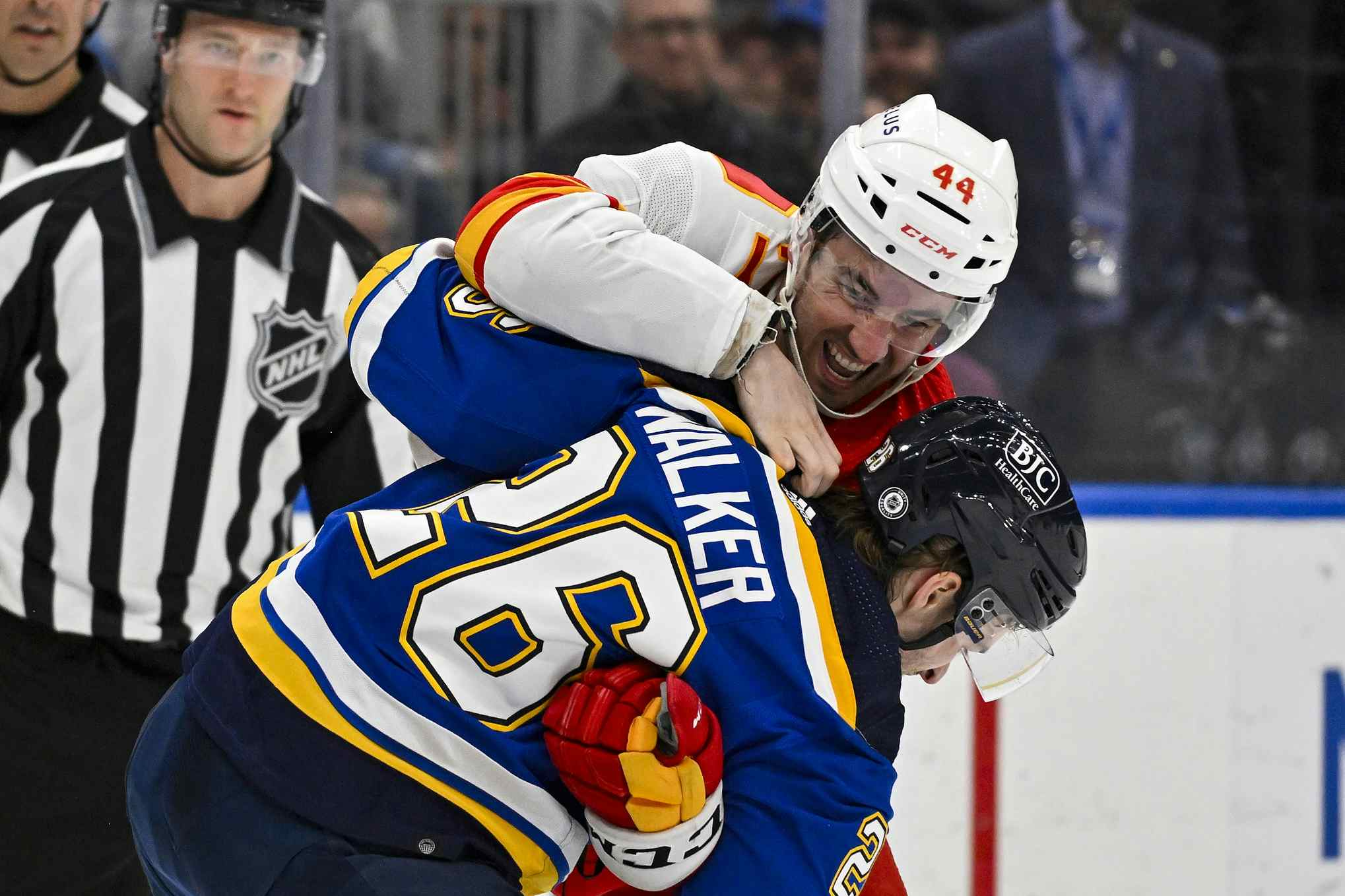A conversation on Kris Russell
By Kent Wilson
8 years agoAs many Calgary residents and Flames fans know, Kris Russell has been a controversial topic in town recently. Colleagues at the FAN960 have been at each other’s throats owing to a disagreement between qualitative and quantitate evaluation of Kris Russell’s play.
We’ve been clear about where we stand on the Russell divide over the last few years, but I wanted to fully explicate the dastardly “analytics” side of the debate for the purposes of clarity. What follows is how I would respond to the main talking points that tend to crop up in this ongoing argument.
Why do you hate Kris Russell?
Look, it has nothing to do with liking or disliking Kris Russell as a person.
Here’s the thing: the data on Russell is unequivocal. Sometimes guys have a mix of outcomes that invites varying interpretations, but that’s not the case this time.
Over his three seasons in Calgary, the Flames have been cumulatively outshot 3780 to 2925 with Russell on the ice at even strength. That’s a shot attempt differential of -855(!). With Russell skating at 5on5, the club has surrendered 64.5 shot attempts against per hour of ice time. To put that in perspective, this year the worst shot against rate in the league amongst regular defenders is… Kris Russell, at 64.24/60.
Amongst teams, only the Colorado Avalanche surrender more than 60 shot attempts against per hour this year. In the last two seasons, only 5 teams have crossed that barrier: the Avs (twice), Calgary, Toronto and the lowly Buffalo Sabres.
So, to be blunt: giving up more than 60 attempts per hour is bottom of the league bad.
But that’s mostly just an effect of playing on the Flames and with other guys like Wideman and Hamilton, right?
Ehh, not really. Russell doesn’t just trail the league in general by these sorts of measures, he’s also the worst Flame by a fair margin.
This year he places last on the blueline in terms of relative possession (-5.58%), last in terms of rate of shot attempts against (the aforementioned 64.24/60) and second last in terms of relative scoring chance rate (-4.54%) ahead of only Ladislav Smid.
In total, Calgary has been outshot (-228) and out chanced (-78) by the greatest margin with Russell playing at 5on5 this year. The only other guys in the same ballpark are Dennis Wideman (-148 shots and -48 chances) and Deryk Engelland (-143 shots and -35 chances).
This season is no aberration either. Russell has consistently placed last or second last in almost any defensive stat you care to name during his tenure as a Flame.
As for this being an effect of playing with certain partners, the data suggests it’s Russell who is the anchor on his pairing in most instances. Here’s the with or without you data from the last 3 seasons:
- Deryk Engelland with Russell: corsi for % (shot attempts rate) = 40%
- Dereyk Engelland without Russell: CF% = 43%
- Dougie Hamilton with Russell: CF% = 45%
- Dougie Hamilton without Russell: CF% = 53%
- TJ Brodie with Russell: CF% = 43%
- TJ Brodie without Russell: CF% = 50%
- Dennis Wideman with Russell: CF% = 44%
- Dennis Wideman without Russell: CF% = 44%
- Chris Butler with Russell: CF% = 40%
- Chris Butler without Russell: CF% = 42%
Aside from Wideman (where there’s no change), every other player sees his possession rate drop while playing with Russell.
But Russell blocks a lot of shots. Doesn’t that help negate the effects of being on for a lot of shots against?
Not really enough to move the needle. This year, Russell’s Fenwick ratio (that’s unblocked shot attempts against) is -5.43%, which comes out to a -131 differential over the season (again the worst on the team). So even when we remove all the shot blocks Russell makes, he’s still well underwater.
Well why doesn’t Russell have a worse +/- rate if he’s so bad defensively with the Flames?
That’s an excellent question. Over his tenure in Calgary, Russell has enjoyed the highest PDO (on ice SH% + SV%) on the Flames blueline (101.8), mostly driven by an on-ice SH% of 9.88. That means, the Flames have scored at almost a 10% clip with Russell on the ice at even strength. As a result, he’s only got a -2 goal differential at 5on5 as a Flame.
A-ha! So Russell drives shooting percentage!
No. Defenders don’t affect SH% in the NHL. PDO and on-ice SH% are more measures of natural variance (chance) at this level. These numbers tend to vary around the league (or team) mean for most players, especially defensemen.
For those who didn’t click the link, the key finding is:

A graph comparing defenders’ on-ice SH% over 3-year spans. The takeaway:
Regardless of what a defenseman’s on-ice Sh% looked like from 08-11, you should basically expect it to be average from 12-14. Also, it’s apparent that the on-ice Sh%s of defensemen tend to vary less so than that of forwards. Accompany that with the fact that Sv% regresses almost completely to the mean between a 4 and 3 year interval and it is safe to assume that defensemen have a minimal impact on their on-ice shooting percentage.
So if a defender had a on-ice SH% of around 10% over three seasons, the best bet is for it to be around league average (around 8%) over the next three seasons.
Meaning, you should always be wary about acquiring a defensemen who is being supported by a high shooting percentage. If he’s slightly underwater running hot, he’ll get completely run over when things regress (and they will regress).
Okay, what about SV% then? Surely defenders have a strong influence on SV%?
Same deal. From the link above:

There looks like at least some marginal effect there (though still heavy regression), but:
The results don’t seem to differ much from the forward data. On-ice save percentage regresses heavily to the mean yet again in spite of the fact that a portion of the sample played in front of the same goaltender. (emphasis added) This outcome aligns with a multitude of other studies testing the repeatability of on-ice save percentage at the player level.
Save your numbers. Kris Russell plays the game the right way. You can’t measure his intangibles.
I guess that’s true, but then you have to decide what’s more important when evaluating a player: his perceived effort or his actual performance. Especially when it comes to making important decisions about whether to trade him or what to pay him. When we use certain adjectives to describe a player, we are essentially using them as proxies for performance evaluation. I submit these shouldn’t replace actual measures of performance in our evaluations.
I have no doubt Kris Russell is a great teammate. And it’s clear he’s passionate and willing to sacrifice his body. Those are admirable, laudable qualities.
Of course, the reason we like those things (beyond the fact that they are easily observable) is that they stand as indicators of future performance in our minds. Because the human brain is bad at understanding things like base rates, natural variance and broad statistical trends, we tend to set up certain rules of thumb and heuristics in our heads that stand for those kinds of numerate, predictive tools (even though they aren’t quite as effective). We also naturally like people who display certain pro-social (or pro-team) behaviours because it suggests they care about the things we care about.
So because we can’t directly observe or emotionally relate to numbers and graphs, our minds tend to take a complex question (“how good a defenseman is Kris Russell?”), and replace it with a much easier question (“Do I like Kris Russell?”). If the answer to the latter question is “yes”, it guides how we answer the first. This bias is called the substitution principle, and it’s a recognized mental shortcut in psychology.
This is how fans and even NHL management so often manage to confuse “I like” with “is useful.” It’s a tendency in NHL culture which I have dubbed “cut of his jib” evaluation: where coaches and GM’s talk about how much they like a player’s personal qualities, rather than how effective he is.
Often there is overlap between the two states of “I like” and “is useful”, but not always. It’s why it’s best to always check your intuition and premises against the data, just in case your brain is substituting an easier, more emotionally available question for a harder, more complex one.
So why do the Flames coaches and management like Russell so much?
Because of a combination of the substitution principle and Russell’s high PDO. The player’s above average on-ice percentages buttressed the negative effects of his poor possession over the last three years. Because the effect of Russell’s bad outshooting has been muted by a high on-ice SH%, the team hasn’t paid an inordinate price in terms of goals.
That has freed Bob Hartley and crew to more heavily weight the intangibles in Russell’s game than they would if he was being roundly outscored. Intangibles tend to become much less important in people’s eyes when the goal differential begins to plunge, coaches included.
Remember though: Russell’s percentages are very, very likely to regress to the league mean moving over the next three seasons. That’s why he is such a high risk to re-sign at a big number. Because the team gets highly outshot with Russell on the ice, a regression in percentages will result in a big, negative goal differential.
And like Andrew MacDonald before him, people will stop talking about Russell’s intangibles when that happens. And start talking about his toxic contract instead.
I still like Kris Russell.
And there’s nothing wrong with that. He definitely encompasses the stoic, self-sacrificing ethos that dominates the NHL. He’s played hard for this team and been placed in much tougher circumstances than he ever was before in the league. He did everything that was asked of him as a Flame at the best of his ability.
But none of that means he is particularly effective. The data shows us Russell has been mostly overwhelmed as a top-4 defender on this team and is a bad bet to sign at his probable asking price moving forward. That seems calculating and cold, but it’s important to extract sentiment from performance evaluation when the stakes become this high. Sometimes there is a real, unbridgeable gap between “I like” and “is good”.
Recent articles from Kent Wilson





